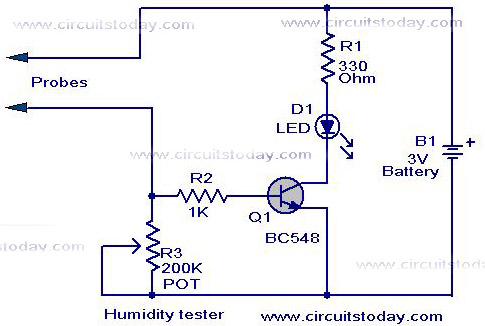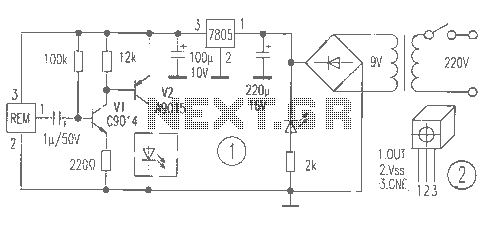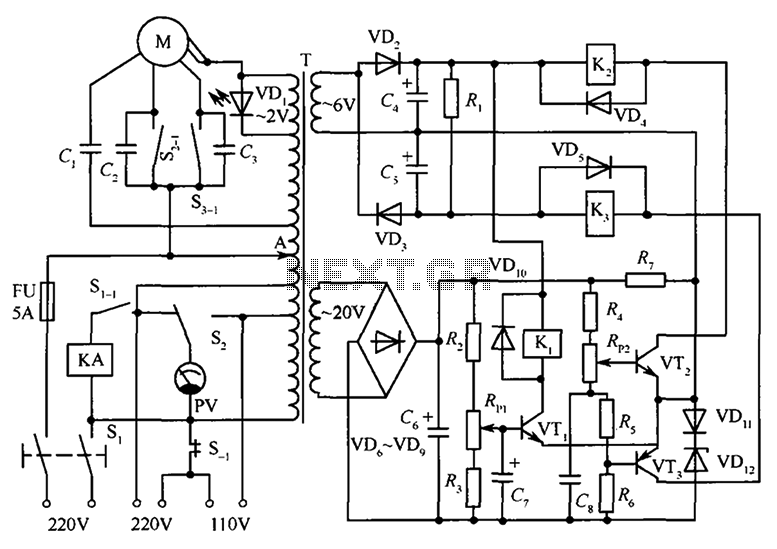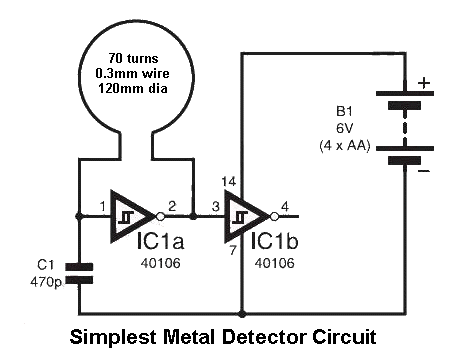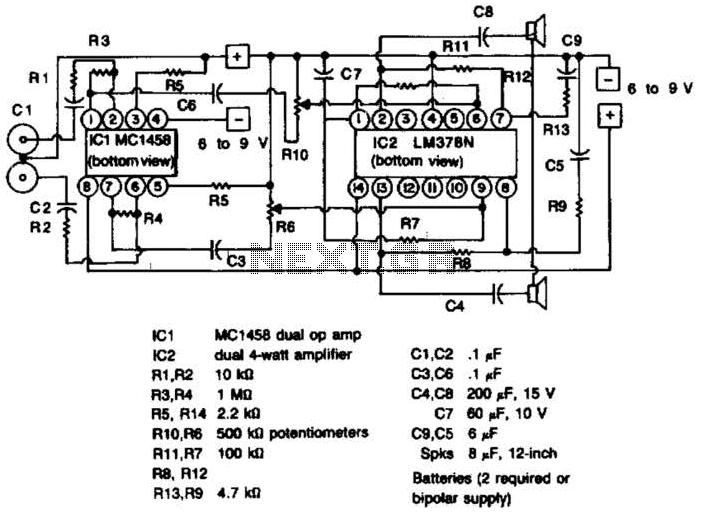
5W 7Mhz Rf Power Amplifier Circuit
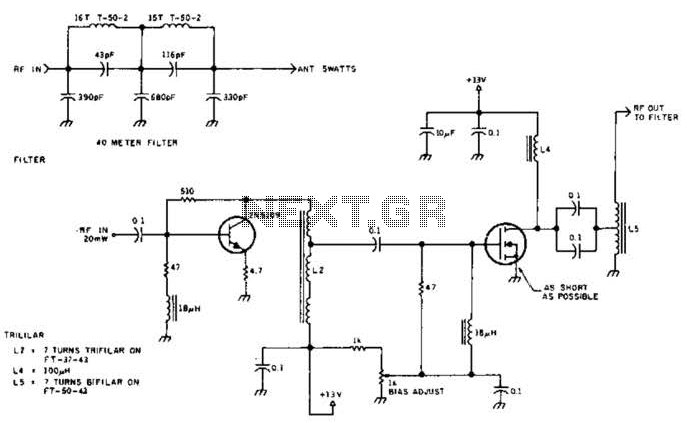
The circuit illustrated is designed to generate up to 5 watts of RF output in the 40-meter (7 MHz) amateur band. The coils depicted are wound on toroidal cores from Armdon Associates Inc., with part numbers provided in the schematic. The circuit necessitates approximately 20 milliwatts of drive power and operates on a 13-volt supply.
This RF amplifier circuit is intended for use in amateur radio applications, specifically targeting the 40-meter band, which is popular among amateur radio operators for its relatively long range and favorable propagation characteristics. The circuit's design incorporates toroidal inductors, which are favored for their efficiency and compact size, making them suitable for RF applications.
The input stage of the circuit requires a drive power of about 20 mW, which can typically be supplied by a low-power RF source, such as a transceiver or other signal generator. The 13-volt supply is essential for powering the active components of the circuit, which may include transistors or operational amplifiers, depending on the specific design implementation.
The schematic includes detailed part numbers for the toroidal cores, which are crucial for achieving the desired inductance and performance characteristics. Proper selection of these components is vital to ensure low losses and high efficiency in the RF output. The circuit may also incorporate additional filtering or matching networks to optimize the output for transmission and minimize signal distortion.
Overall, this circuit exemplifies a practical approach to RF amplification within the amateur radio spectrum, providing operators with a robust solution for generating adequate power levels for effective communication. Proper assembly and tuning of the circuit will be necessary to achieve optimal performance in the intended frequency range. The circuit, shown will produce up to 5-W RF output in the 40-m (7 MHz) amateur band. The coils shown are wound on toroidal cores (Armdon Associates Inc.). The part numbers are given in the schematic. The circuit requires about 20-mW drive and a 13-V supply.
This RF amplifier circuit is intended for use in amateur radio applications, specifically targeting the 40-meter band, which is popular among amateur radio operators for its relatively long range and favorable propagation characteristics. The circuit's design incorporates toroidal inductors, which are favored for their efficiency and compact size, making them suitable for RF applications.
The input stage of the circuit requires a drive power of about 20 mW, which can typically be supplied by a low-power RF source, such as a transceiver or other signal generator. The 13-volt supply is essential for powering the active components of the circuit, which may include transistors or operational amplifiers, depending on the specific design implementation.
The schematic includes detailed part numbers for the toroidal cores, which are crucial for achieving the desired inductance and performance characteristics. Proper selection of these components is vital to ensure low losses and high efficiency in the RF output. The circuit may also incorporate additional filtering or matching networks to optimize the output for transmission and minimize signal distortion.
Overall, this circuit exemplifies a practical approach to RF amplification within the amateur radio spectrum, providing operators with a robust solution for generating adequate power levels for effective communication. Proper assembly and tuning of the circuit will be necessary to achieve optimal performance in the intended frequency range. The circuit, shown will produce up to 5-W RF output in the 40-m (7 MHz) amateur band. The coils shown are wound on toroidal cores (Armdon Associates Inc.). The part numbers are given in the schematic. The circuit requires about 20-mW drive and a 13-V supply.
